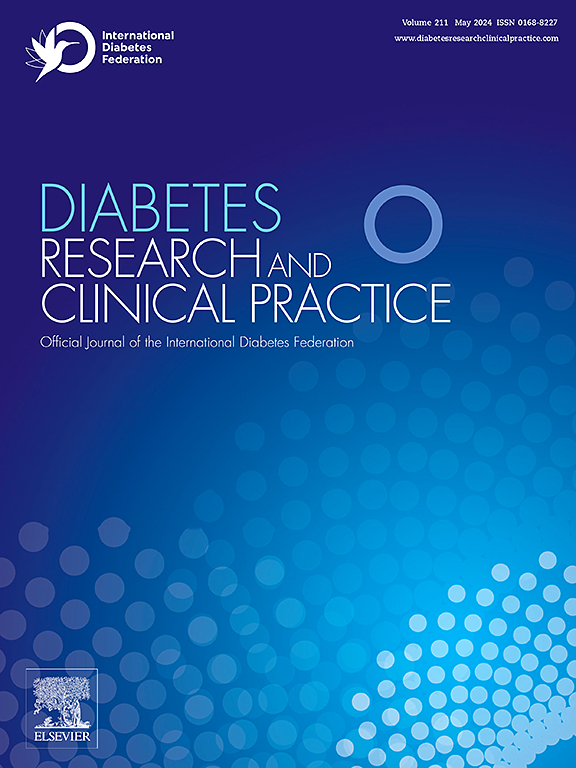Gender differences in the association between insulin resistance assessed by estimated glucose disposal rate and the risk of all-cause and cardiovascular deaths in adults without diabetes
IF 7.4
3区 医学
Q1 ENDOCRINOLOGY & METABOLISM
引用次数: 0
Abstract
Aim
We intended to examine the relationship between estimated glucose disposal rate (eGDR) and risks of all-cause and cardiovascular deaths in non-diabetic adults.
Methods
38,175 participants from the National Health and Nutrition Examination Survey (1999–2018) were included, and deaths were identified through the National Death Index.
Results
With a median follow-up of 9.8 years, we found that dose–response relationships between eGDR level and the risk of death differed between genders. In female participants, higher eGDR level was linearly correlated with lower risks of all-cause and cardiovascular deaths. In contrast, among male participants, there were L-shaped relationships between eGDR and risks of all-cause and cardiovascular deaths, with threshold points of 8.50 and 8.49 mg/kg/min, respectively. To the left of threshold points, eGDR was negatively linked with risks of all-cause (HR 0.91, 95 % CI 0.88–0.94, P < 0.001) and cardiovascular deaths (HR 0.87, 95 % CI 0.82–0.93, P < 0.001). After the inflection point, an increase in eGDR was not related to lower risks of all-cause and cardiovascular deaths (P > 0.05).
Conclusion
Higher eGDR level was associated with lower risks of all-cause and cardiovascular deaths in a linear dose–response manner among non-diabetic females, while L-shaped relationships were observed among non-diabetic males.
通过估计葡萄糖处置率评估的胰岛素抵抗与无糖尿病成人全因死亡和心血管死亡风险之间关系的性别差异
目的:我们旨在研究非糖尿病成人中估计的葡萄糖处置率(eGDR)与全因和心血管死亡风险之间的关系。方法:纳入1999-2018年全国健康与营养调查(National Health and Nutrition Examination Survey)的38175名参与者,并通过国家死亡指数(National Death Index)确定死亡人数。结果:中位随访时间为9.8年,我们发现eGDR水平与死亡风险之间的剂量-反应关系在性别之间存在差异。在女性参与者中,较高的eGDR水平与较低的全因死亡和心血管死亡风险呈线性相关。相比之下,在男性参与者中,eGDR与全因死亡和心血管死亡风险之间呈l型关系,阈值分别为8.50和8.49 mg/kg/min。在阈值点左侧,eGDR与全因风险呈负相关(HR 0.91, 95 % CI 0.88-0.94, P 0.05)。结论:在非糖尿病女性中,较高的eGDR水平与较低的全因和心血管死亡风险呈线性剂量反应关系,而在非糖尿病男性中则呈l型关系。
本文章由计算机程序翻译,如有差异,请以英文原文为准。
求助全文
约1分钟内获得全文
求助全文
来源期刊

Diabetes research and clinical practice
医学-内分泌学与代谢
CiteScore
10.30
自引率
3.90%
发文量
862
审稿时长
32 days
期刊介绍:
Diabetes Research and Clinical Practice is an international journal for health-care providers and clinically oriented researchers that publishes high-quality original research articles and expert reviews in diabetes and related areas. The role of the journal is to provide a venue for dissemination of knowledge and discussion of topics related to diabetes clinical research and patient care. Topics of focus include translational science, genetics, immunology, nutrition, psychosocial research, epidemiology, prevention, socio-economic research, complications, new treatments, technologies and therapy.
 求助内容:
求助内容: 应助结果提醒方式:
应助结果提醒方式:


